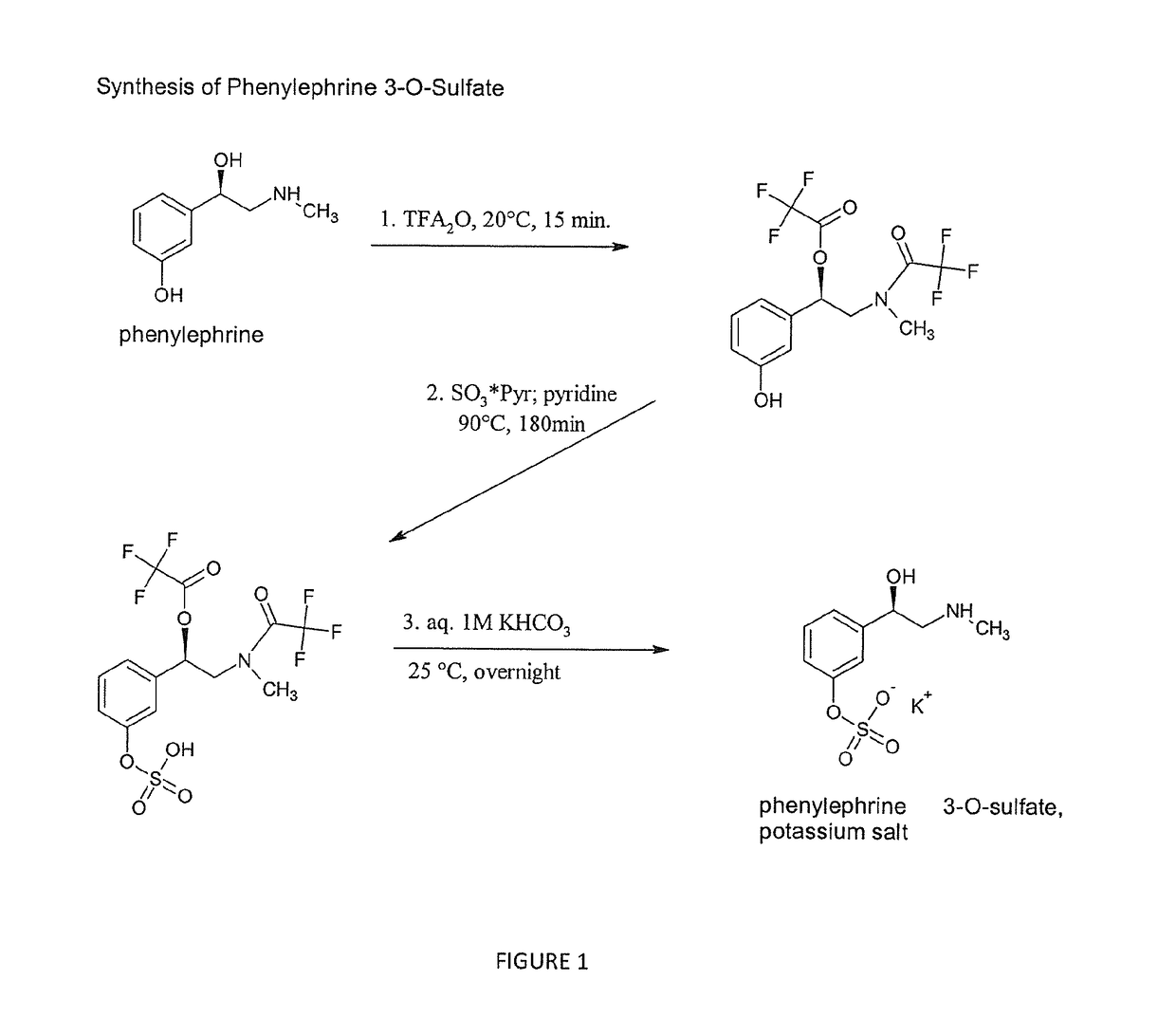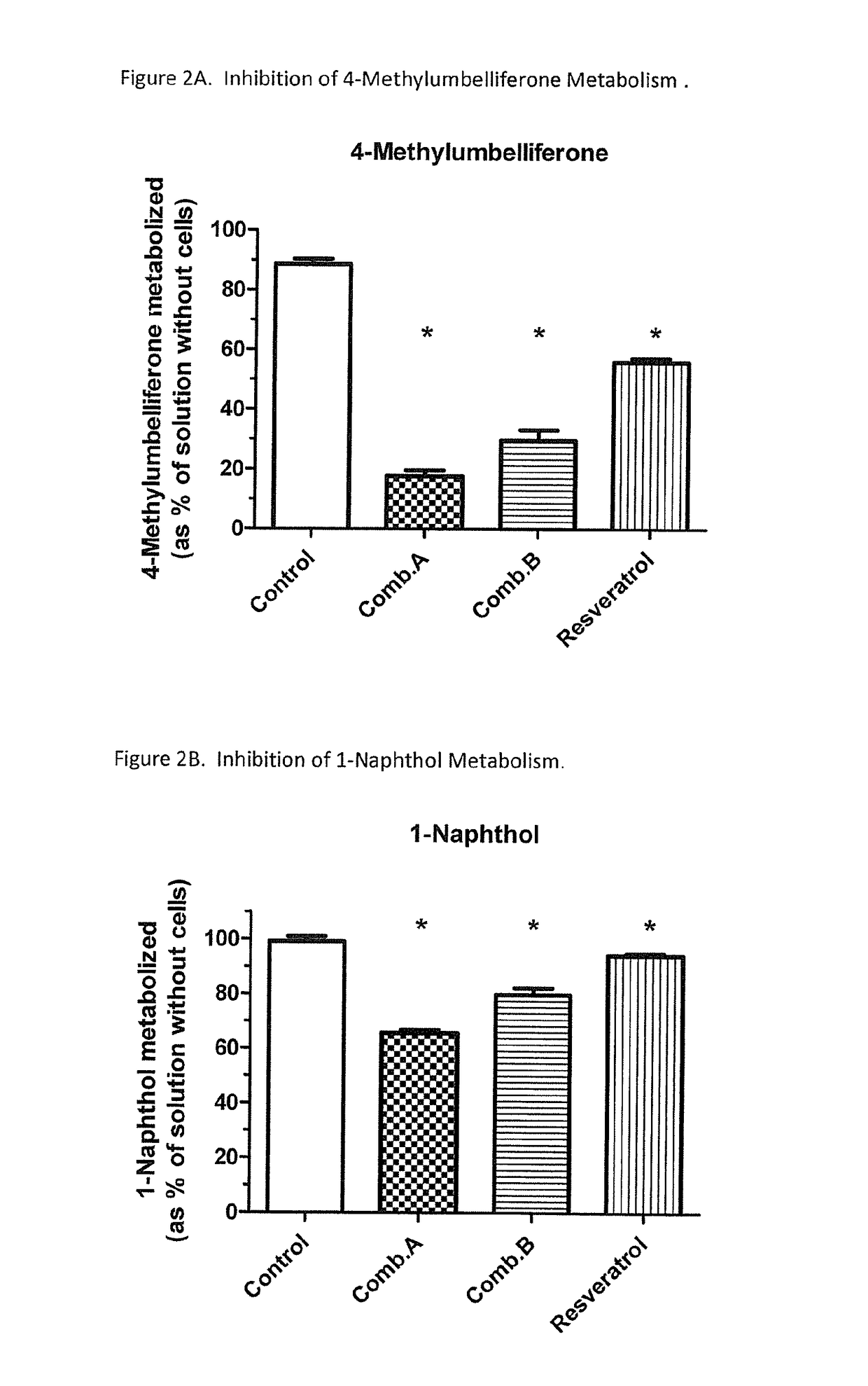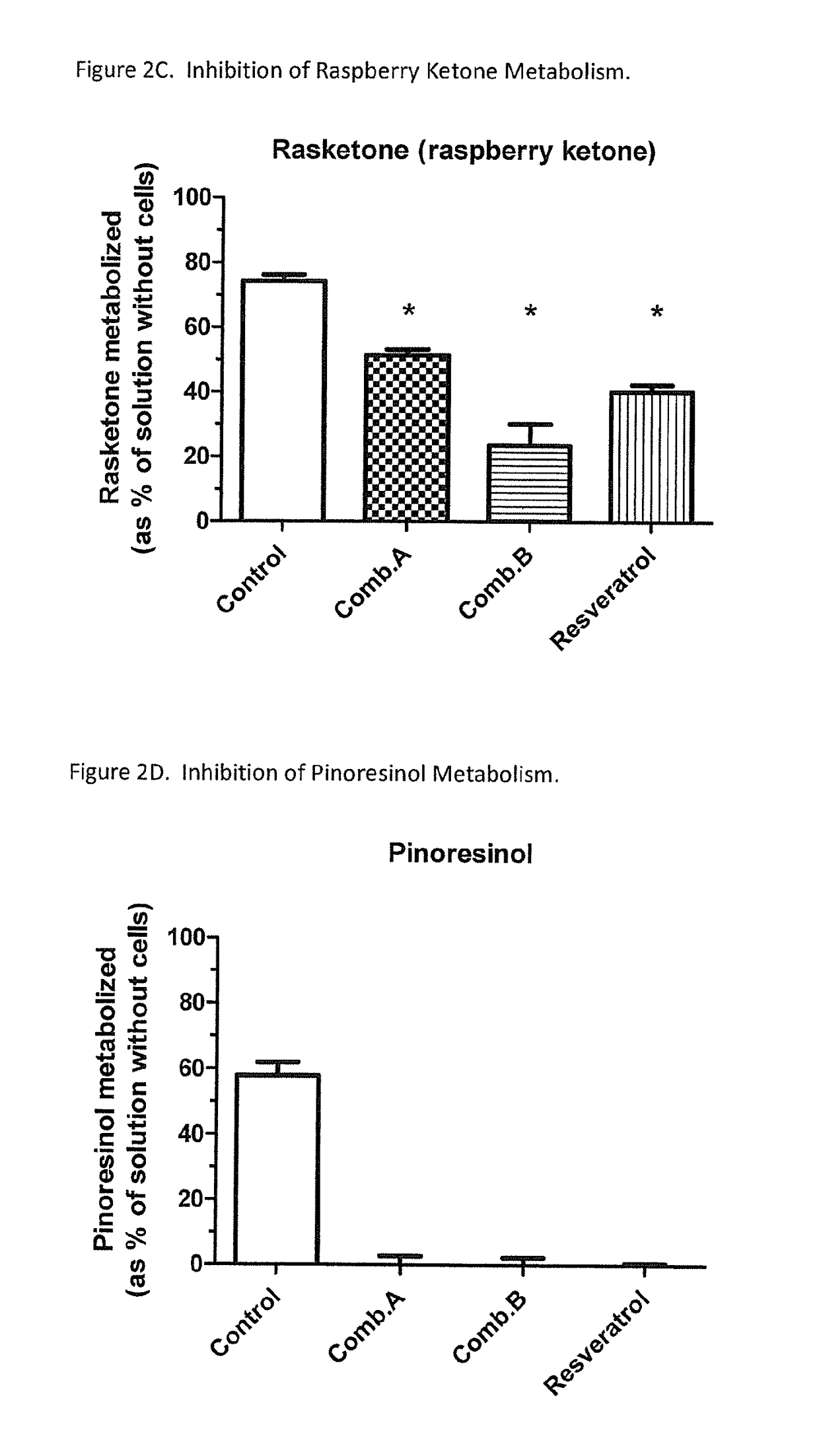Selective metabolic approach to increasing oral bioavailability of phenylephrine and other phenolic bioactivities
a phenylephrine and bioactivity technology, applied in the field of increasing the bioavailability of bioactive compounds, can solve the problems of insufficient tissue distribution, insufficient phenolic compound pre-systemic and/or systemic clearance, and not necessarily preventing the glucuronidation of all ugt substrates. the effect of bioavailability
- Summary
- Abstract
- Description
- Claims
- Application Information
AI Technical Summary
Benefits of technology
Problems solved by technology
Method used
Image
Examples
example 1
In Vitro Inhibition of Phenylephrine (PE) Sulfation by Phenolic Dietary Compounds
[0054]Background.
[0055]This in vitro study aimed to investigate the feasibility of inhibiting the pre-systemic sulfation of PE.
[0056]Methods.
[0057]Phenolic compounds were selected from FDA's “GRAS” list, approved food additives, or dietary supplements. LS180 cells were used as a model to test the effect of these phenolic compounds on the pre-systemic sulfation of PE. The cells were incubated in 0.5 ml medium with PE (50 μM)±inhibitor (100 μM) overnight. Extracellular buffer was collected and cells were extracted with methanol. PE was determined by reversed-phase HPLC with fluorescence detection. The formation of PE-sulfate was analyzed by LC-MS / MS. Results (n=3 per group) were analyzed by one-way ANOVA with Dunnett's post-test (p<0.05; Prism 5).
[0058]Results.
[0059]The extent of disappearance of PE (control=503±127 pmol / hr) was significantly (p<0.05) decreased to the following (mean±SD, as % of control):...
example 2
[0062]Resveratrol (RES; 25 μM) was incubated with LS180 cells for 4 hours (as described in Example 1) in the absence or presence of the inhibitors (100 μM) listed below. The compounds marked with asterisks indicate a significant inhibition of resveratrol metabolism (disappearance) compared to controls in the absence of the inhibitors. Methylparaben and ethyl vanillin showed the greatest extent of inhibition of resveratrol metabolism, while cinnamic acid, piperine, eugenol, vanillin, propylgallate, and propylparaben also showed significant inhibition.
[0063]
TABLE 3Extent of Resveratrol Disappearance with Phenolic Dietary Compounds.Extent of RES DisappearanceIncubationCompound(as % of control)SDTime (hr)*methylparaben0.4%n / a4*ethylvanillin8.1%377.0%4*cinnamic acid16.3%63.8%4*piperine26.4%67.6%4*eugenol38.3%25.8%4*vanillin44.8%16.6%4*propyl gallate51.2%14.5%4*propylparaben57.8%20.1%4*sinapic acid86.1%11.7%4zingerone83.7%40.9%4caffeic acid91.1%9.3%4ferulic acid100.2%37.9%4vanillic acid10...
example 3
[0064]2-Methoxyestradiol (2-ME; 10 μM) was incubated with LS180 cells for 4 hours (as described above) in the absence or presence of the inhibitors (100 μM) listed below. The compounds marked with asterisks indicate a significant inhibition of 2-methoxyestradiol metabolism (disappearance) compared to controls in the absence of the inhibitors. Significant inhibition of 2ME metabolism was observed with eugenol, vanillin, propyl gallate, and propylparaben.
[0065]
TABLE 4Extent of 2-Methoxyestradiol Disappearance withPhenolic Dietary CompoundsExtent of 2-ME DisappearanceIncubationCompound(as % of control)SDTime (hr)*eugenol21.2%54.8%1*eugenol33.9%26.9%1*vanillin39.4%21.4%1*propyl gallate42.8%24.7%1*propyl gallate50.4%14.1%1*vanillin51.2%14.5%1*propylparaben51.7%20.6%1*propylparaben57.7%13.7%1cinnamaldehyde87.6%13.1%1cinnamaldehyde93.9%9.0%1*sinapic acid88.1%10.4%1caffeic acid93.3%10.0%1vanillic acid99.1%7.9%1gallic acid101.5%10.8%1ferulic acid101.7%10.2%1
PUM
| Property | Measurement | Unit |
|---|---|---|
| pH | aaaaa | aaaaa |
| concentration | aaaaa | aaaaa |
| concentration | aaaaa | aaaaa |
Abstract
Description
Claims
Application Information
 Login to View More
Login to View More - R&D
- Intellectual Property
- Life Sciences
- Materials
- Tech Scout
- Unparalleled Data Quality
- Higher Quality Content
- 60% Fewer Hallucinations
Browse by: Latest US Patents, China's latest patents, Technical Efficacy Thesaurus, Application Domain, Technology Topic, Popular Technical Reports.
© 2025 PatSnap. All rights reserved.Legal|Privacy policy|Modern Slavery Act Transparency Statement|Sitemap|About US| Contact US: help@patsnap.com



